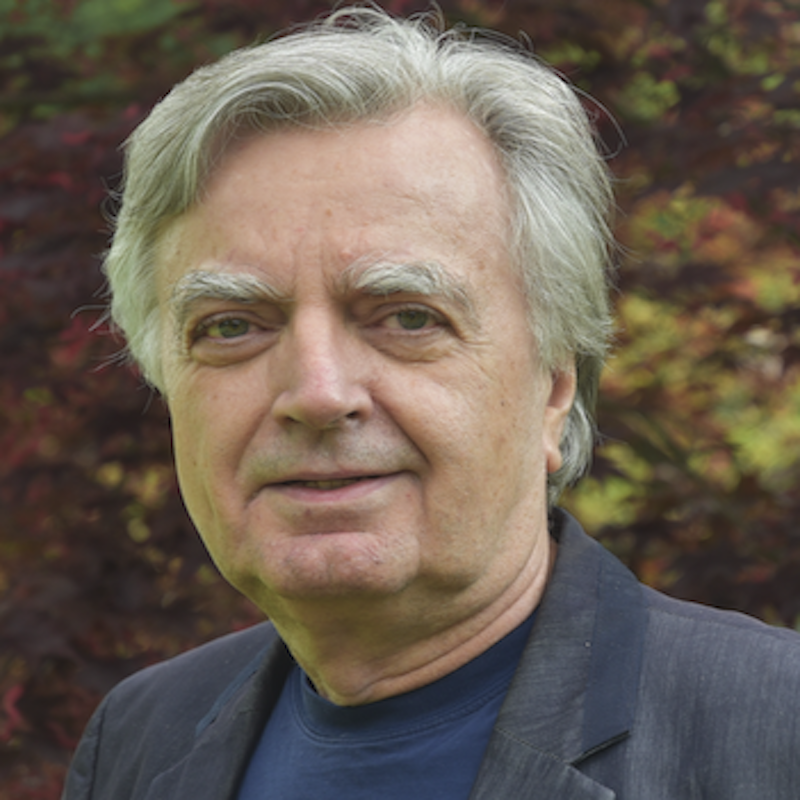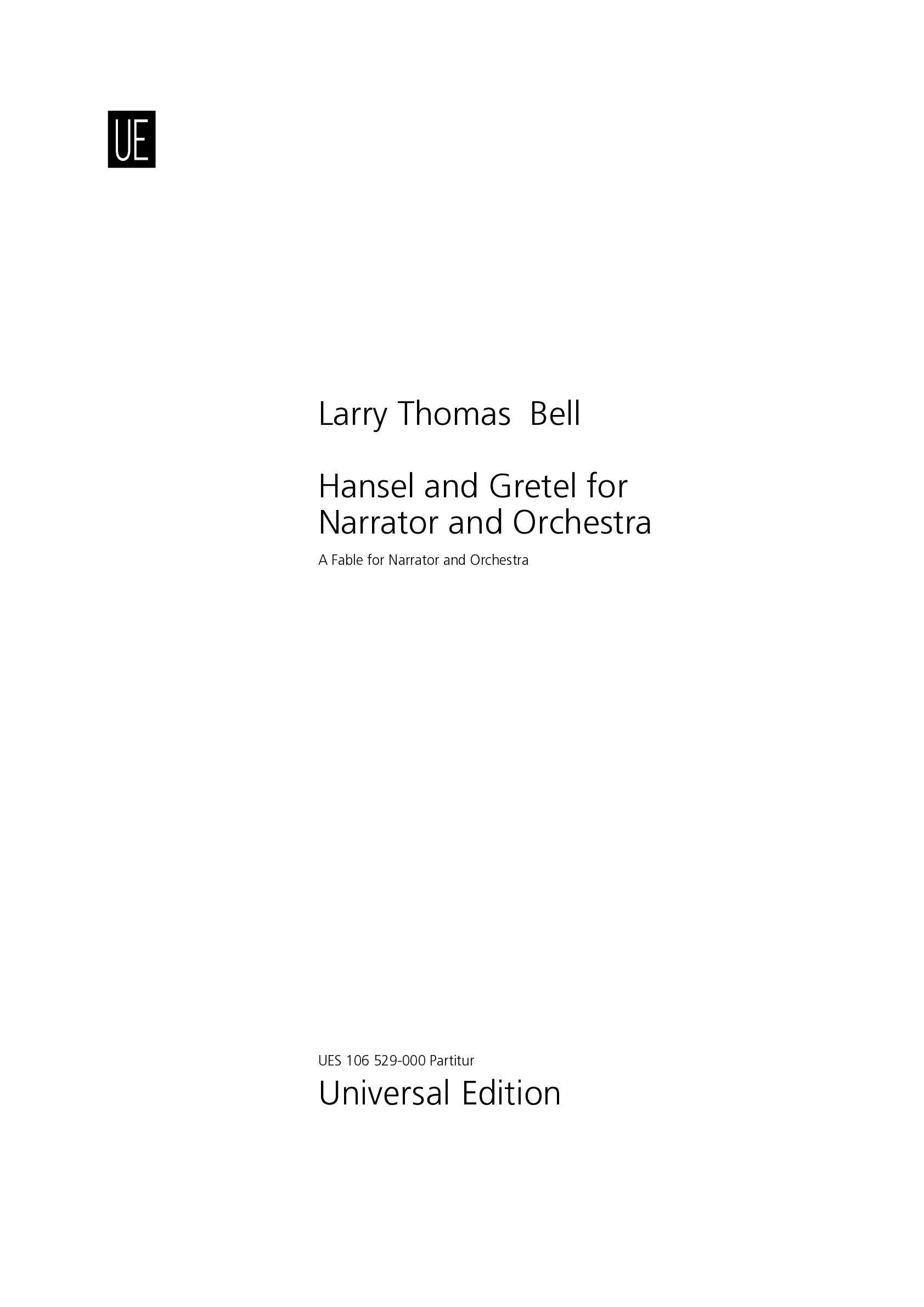

Larry Thomas Bell
Hansel and Gretel for Narrator and Orchestra
Short instrumentation: 3 2 2 2 - 4 2 3 1, timp, xyl, perc(2), cel, hp, str
Duration: 30'
Instrumentation details:
piccolo
flute (2 players)
oboe (2 players)
clarinet in Bb (2 players)
bassoon (2 players)
2nd horn in F (2 players)
2nd horn in F (2 players)
trumpet in C (2 players)
bass trombone
trombone (2 players)
tuba
timpani
xylophone
1st percussion
1st percussion
celesta
harp
violin I (16 players)
violin II (14 players)
viola (10 players)
violoncello (10 players)
double bass (6 players)
Hansel and Gretel for Narrator and Orchestra
Printed/Digital
Translation, reprints and more

Larry Thomas Bell
Hansel and Gretel for Narrator and OrchestraType: Dirigierpartitur
Sample pages
Work introduction
Hansel and Gretel, a Fable for Narrator and Orchestra, op. 59, is based on the classic Grimm fairy tale. Unlike the familiar Humperdinck opera libretto, the children in the original fable do not lose their way in the forest, but, much more scarily, are deliberately abandoned by their starving stepmother and father. Both children–and especially Gretel–triumph as the heroes of their perilous adventure.
This piece was commissioned and designed to introduce the instruments of the orchestra to children under the age of twelve. As the narrator tells us, various instruments represent the characters in the story. The French horns play the father’s music, the step-mother is played on a muted trumpet, Gretel is represented by the violin and Hansel by the cello. Three friendly animals are heard in the woodwinds: with a tip of the hat to Prokofieff’s Peter and the Wolf, their cat is played by the clarinet, the bird is played by a flute, and the duck by the oboe. The wicked witch is heard on the xylophone.
In addition certain elements of the story are painted by music. For example, the jewels the children find shine in the orchestra. The evil step-mother and the witch share the interval of a tritone, and both have similar motives drawn from a half diminished seventh chord. The father’s music centers around c minor, and the music for Hansel and Gretel is closely related to G major.
The challenge of writing a large work for narrator was lightened by the fact that I had previously set two narrator works: Edgar Allan Poe’s The Black Cat for narrator, cello and piano (recorded on CD by Robert J. Lurtsema, cellist Eric Bartlett, and myself as pianist), and Lewis Thomas’s Late Night Thoughts on Listening to Mahler’s Ninth Symphony for narrator, violin and piano.
Hansel and Gretel, finished in August in 2001, was commissioned by New England Conservatory Preparatory School, Mark Churchill, Dean. It was written with the instrumentation of the Youth Philharmonic Orchestra and with its conductor, Benjamin Zander, in mind and it was recorded by them in 2003. The work has been performed by the Atlanta Symphony, Melbourne Symphony, and in the of Boston Symphony Hall, and in Boston’s Jordan Hall. It has also been performed numerous times as a ballet by the Hanover Theater Ballet in Worcester, MA.
What is necessary to perform this work?
Piccolo
2 Flutes
2 Oboes
2 Bb Clarinets
2 Bassoons
4 French Horns in F
2 Trumpets in C
2 Tenor Trombones
Bass Trombone
Tuba
Timpani
Percussion 1: Xylophone
Percussion 2: Glockenspiel, Bass Drum
Percussion 3: Crash Cymbals, Tam-Tam
Celesta
Harp
Strings
Violin I: (at least 6 stands including one solo)
Violin II: (at least 5 stands)
Viola: (at least 4 stands)
Violoncello: (at least 3 stands including one solo)
Doublebass: (at least 4 players)
Characters: Narrator
